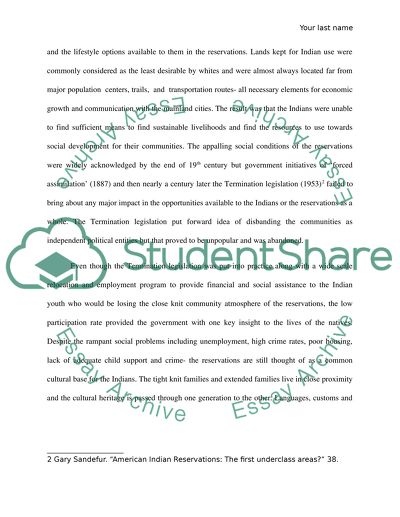Cite this document
(“The Establishment of Indian Reservations in the U.S Term Paper”, n.d.)
The Establishment of Indian Reservations in the U.S Term Paper. Retrieved from https://studentshare.org/history/1457998-the-establishment-of-indian-reservations-in-the-us
The Establishment of Indian Reservations in the U.S Term Paper. Retrieved from https://studentshare.org/history/1457998-the-establishment-of-indian-reservations-in-the-us
(The Establishment of Indian Reservations in the U.S Term Paper)
The Establishment of Indian Reservations in the U.S Term Paper. https://studentshare.org/history/1457998-the-establishment-of-indian-reservations-in-the-us.
The Establishment of Indian Reservations in the U.S Term Paper. https://studentshare.org/history/1457998-the-establishment-of-indian-reservations-in-the-us.
“The Establishment of Indian Reservations in the U.S Term Paper”, n.d. https://studentshare.org/history/1457998-the-establishment-of-indian-reservations-in-the-us.


